Wander's Behind the Wheel
Things I've done, places I've seen and random things in between, all thanks to my various driving trips around the world.
Thursday, August 04, 2011
Cornering King - Mercedes-Benz SLS AMG
There's a good chance the woman in your life would feel threatened by this menacing looking sports coupe. Probably the same way grandma felt when grandpa drooled over the Mercedes-Benz 300SL Gullwing (1954 – 1957) - a revered road going sports car of their time. It featured fuel injection, had a top whack of 235kph and did a 100 in less than 10 seconds – impressive figures for even today’s cars.
The 300 SL’s design was so fresh and futuristic that even today, half a century on, its spiritual successor – the SLS AMG – can carry strikingly similar design cues – the gaping grille dominated by the three pointed star, the long hood and upright windscreen, the tapered rear and of course the iconic ‘Gullwing’ doors.
The SLS AMG, however, owes its soul to a legendary race car – the W 194 also called the Panamerica Racer (see below).
AMG, based at Affalterbach, is the tuning offshoot of Mercedes-Benz turning out thoroughbred sports car avatars of everyday Mercedes-Benz models. The SLS though is the first car to be completely engineered by AMG.
And that was your concise history and geography lesson - I am now going to tell you what the SLS can do and, bloody hell, does it do it well!!!. I write this just after a 450km long day out driving the SLS on the twisty Pam American highway in Mexico from Peubla to Oaxaca. My pulse is still racing and I can still hear the engine in my head roaring with unbridled enthusiasm as it down shifts through the seven speed double clutch transmission with the ceramic brakes shaving off some speed as I attack a corner. Round the apex, off the brakes, on the gas and 563 horses in the crankcase burst into spontaneous gallop as if being ridden by Wagner's Valkyries . More emotions surge through my soul in those five seconds around the curve than I usually experience in a day at the desk. Terror, confidence, joy and exhilaration rapidly sear through me as the SLS urges me to take a corner at an eye-popping pace and then goes around it with the poise and grace of a Bolshoi ballerina doing a pirouette. There is no battle of wills fought through the steering wheel to keep things tidy nor is there a nightmare waiting to happen even when the corner is a double apex one – just oodles of grip and complicity. The dynamics of this car make it scythe through twists and turns - quickly and precisely – thanks to its low centre of gravity and weight distribution - 47 percent at the front and 53 at the rear. At consequent twists on the road, especially between Tehuacan and Asuncion, the SLS inspired me to get off the power late and carry more speed into corners and still it went through without any corrective action from the ESP (Electronic Stability Program). The steering however feels a tad too light at high speeds, especially over road irregularities.
To put aside superlatives and give you figures, AMG claims the SLS will go from 0 to 100kph in just 3.8 seconds and to 200kph in 12 – quite believable because I remember the speedo needle hovering at 200kph ever so often. The peak torque is 650Nm at 4750rpm and of this 420Nm is available right down from 2000rpm.
Inside the car, it feels more aircraft cockpit thanks to its design elements including the gear selector that looks like a joy stick. An array of buttons flank the centre console. With one of these you can choose the driving mode (comfort, sports, sports+ or manual), another lets you choose the ESP mode (normal or sports) and yet another raises the rear fin which anyway automatically pops open when the car exceeds 120kph. The seats, which have magnesium backrests, are thinly padded but hugely adjustable to get that perfect driving posture. The flat bottom steering wheel further enhances the race car feel.
When I started off from Puebla the initial section was a double lane carriage way with road surfaces that were not that great. The suspension handled it well, but its stiff set up meant that a few jarring thuds filtered through. This was also because of the low profile tires. The car is so low that speed breakers in villages had to be taken at walking pace and yet the belly would sometimes scrape.
You can either drive this car letting the auto box do all the gear changing for you or you can use the paddle shifts behind the steering to make the driving more involving and it is when you do the latter that the SLS is sheer thrill and even more joy. On twisty roads this car demands to be driven hard thanks to its huge appetite for corners. Yet, on motorway straights it will happily cruise at 120kph with the engine turning over at 2500 rpm in the seventh gear.
You cannot escape attention with this car. It exhaust announces its arrival, its lines get it plenty of eyeballs and whenever I stopped to take pictures and opened the Gullwing doors, it always drew people to it. Out would come cell-phones to take pictures, some would want to pose with the car and I’d usually be bombarded with questions in Spanish.
The SLS AMG is a very engaging driver’s car and when you buy it – for INR 2 crores and more, base price – what you get is a sports supercar that demands adulation and in turn will give you bags of exhilaration each time you take it on a long drive preferably on a twisty road.
The Opa of the SLS
The Opa (‘grandpa’ in German) of the SLS AMG was the racing sports coupé bearing internal code W 194. It was developed – over just nine months – in 1952 to put Mercedes-Benz back in the high echelons of motor racing.
It is this racing car which was very similar, but not identical, to the 1954 road going Mercedes-Benz 300SL (the W 198), that the creators of the SLS AMG drew inspiration from. The road going 300SL was used as a reference point because it’s a more familiar car. But the W 194 was a racing car and the SLS is closer to a race car. In 1950 Mercedes-Benz realized that their swift but heavy pre war Silver Arrows (W 154), were past their glory days. So they looked at developing a sporty (read well handling) and light race car. Hence the acronym SL – ‘Sport Leicht’ (Sport Light).
The W 194 featured double wishbone suspension that Mercedes-Benz had pioneered in the ‘30’s and, one of the reasons why the Silver Arrows had dominated the 1937 Grand Prix season.
Using a tubular space frame as a supporting structure made the W 194 light. A space frame allows reducing the amount of metal without sacrificing strength. To look at, it is a filigree latticework of a large number of triangles and to the eye it is more holes than metal but it’s this precise geometric arrangement of metal that absorbs tensile and compression forces. The W 194’s space frame was 20 kilograms lighter than the ladder type frame of the Silver Arrows and yet had the same tautness.
To ensure maximum stability, the space frame reached high up at the sides which made the Gullwing doors a technical necessity which inadvertently contributed to the car’s cult status. When the road legal version, the 300SL, was introduced at the 1954 New York International Motor Sports Show it was already a legend thanks to the prowess of the racing car from which it had been derived. Finally, why drive the new SLS, developed in Germany, on the Pan-American Highway in Mexico? It was here in November 1952 that a pair of W 194 racing sports coupés, driven by Karl Kling and Hermann Lang, swept to a 1 – 2 victory, respectively, in the 3rd Carrera Panamerica – a 3100 km race across the length of Mexico. The winning car of Karl Kling and co-driver Hans Klenk had even hit a vulture causing the windscreen to shatter, knocking Klenk unconscious and causing him facial injuries, yet they pushed on to win. A third W 194 driven by John Fitch, a World War II ace, would have made it a full podium had he not been disqualified for permitting a mechanic to touch his car on the penultimate day.
It’s a fitting tribute to drive the new SLS AMG ‘Gullwing’ here on this road where its grand-daddy achieved its greatest triumph and reached the pinnacle of its glory.
A Tunnel too Short - Stalag Luft III - Zagan, Poland
I was in Mlada Boleslav, Czech Republic for two days visiting the Skoda museum there. On the second afternoon while staring at the map and wondering where to take the new Skoda Yeti for a drive I saw that we weren’t too far from the Czech-Polish border. And, I knew Stalag Luft III at Sagan was in West Poland. A quick Google revealed that Sagan (now called Zagan) was just 187km away. Soon the World Wide Web had delivered all the information about the location of Stalag Luft III including geographical coordinates (51° 35′ 55″ N, 15° 18′ 27″ E) which I fed into my Garmin GPS and set off. Along with my camera, my Garmin Nuvi 250 is my constant travel companion, without it I would have never found Zagan as easily as I did. Through motorways, country roads and narrow village streets from the Czech Republic through Germany into Poland, it directed me from Mlada Boleslav right to the doorstep of the little museum in Zagan that stands a kilometre from the location of the old prison camp.
The Germans chose Zagan as a location for a POW camp because it was so deep inside enemy territory. The Baltic Sea was far away and if airmen escaped they’d have to go through hundreds of miles of enemy territory before reaching neutral countries like Switzerland or Sweden. Besides that the soft sand was not conducive to tunnelling.
The little museum is run by locals and makes for an interesting visit showing reel footage and displaying the ingenious tools the prisoners fabricated and a small scale layout of the camp. There is also a replica of the tunnel and visitors can crawl through to get a feel of how it must have been.
The short drive away in the woods behind the village is the location where Stalag Luft III once stood. The Germans destroyed the camp when they abandoned it in the face of the Russian advance and in the 65 years since it has been overgrown by the forest, but the concrete foundations are still there. A cobblestoned path marks the route of the tunnel nicknamed ‘Harry’ over ground. I walked around the camp and saw the ‘Cooler’ stood. It was here that Steve McQueen was often put into solitary confinement.
The reason that the escape failed was because the exit of tunnel ‘Harry’ that the prisoners had painstakingly dug over a year was short of the tree line of the woods by a few meters. Today one can stand there and see how little they fell short by. This was the reason why only 76 managed to get out instead of the 250 prisoners as planned. Of these 73 were recaptured and 50 were executed by the Gestapo. Three escaped and 23 were sent back to the camp. Close by near the village cemetery there is a memorial to the 50 who were shot dead. Even today, 66 years later there were fresh flowers on it.
Thursday, March 17, 2011
Seeing Red in the Austrian Alps
My three day round trip from Munich to the Bavarian and Austrian Alps was a driving holiday in every sense of the phrase. The car wasn’t just a means of getting to places it was the star of the trip. Along with the car came a SAT NAV system that had the itinerary for days 1, 2 and 3 loaded into it. The roads within the itineraries had been carefully researched and reconnoitred by the rental company. This wasn’t a sightseeing drive, this was an adrenaline rush fed by the throaty soundtrack of the car and the thrill a Ferrari affords at the wheel.
Of course the places I drove through were stunningly scenic – through little Alpine villages, over scenic mountain passes and along aesthetically perfect Austrian lakes.
Our trip started off with 61.8 kilometre blast down German Autobahn No. A95 and in those 20 minutes the car showed me its brawn. The image of the speedometer needle sitting at 250kph is seared in my mind.The most evocative symbol of 19th century Bavaria is Neuschwanstein Castle, towering over the village of Hohenschwangau. As we approached it, the weather was a mess of rain and heavy cloud, but, this only added to the castle’s charm. Rising like stronghold found in stories that begin with ‘A long time ago in a land far away....’ Neuschwanstein’s tapering steeples have inspired the castle in Walt Disney Pictures’ logo. King Ludwig II of Bavaria commissioned it as a personal refuge and also as homage to Richard Wagner, the German composer who wrote very tempestuous music. Looking up at it towering above the village, I almost expected Wagner’s mythical Valkyries to come riding off the ramparts. Fussen , 4km from Neuschwanstein and the castle itself are highlights of the German Romantic Road, and our route towards Austria crossed both these places. We roared across the Austro-German border a few kilometres after Fussen and were now driving in the Tirol region of the Austrian Alps. You could call that evening an uneventful transport section thanks to the rain. Top down and an easy foot over the throttle over wet roads made the Ferrari grumpy like an energetic stallion on a tight leash. But the day ended on a very high note because the Interalpen Hotel Tyrol in Telfs – the included accommodation of my driving package was simply over-the-top luxury. Superb views, gourmet cuisine, an award winning spa and incredibly large rooms made this the perfect stop to recharge for the next day.The next morning the sun was shining and I was beaming. That day I realized the true worth of having roads sourced out for the drive. The rental agency had chalked out a circuit where we’d have maximum fun with the Ferrari. From Telfs to Innsbruck we drove through typical Austrian villages like Vols, Gotzens, Mutters and Tulfes.The car always turned heads. I remember some little school boys yelling out “Holà Alonso”. Since these roads were so painstakingly researched and sourced out, most of them had minimal traffic and there I could give the Ferrari a loose reign. I can’t even begin to describe what a sensation it was to drive those roads in a car that lusts for curves. Top down, the landscape rushed by as if I was in a video game. Corners aplenty – Hairpins, ‘S’ bends, chicanes – they were all there to indulge in. A 20km route called the Zillertaler Höhenstraße in the Schwaz region of Tirol was the highlight of the day’s drive as it was stunningly scenic and mouth-wateringly twisty. The posh Austrian town of Kitzbuhel was the second night halt. Often likened to Aspen, Colorado, this is where the swish set comes to ski in winter and be seen in summer – the boutiques and restaurants in the cobble-stoned town centre speak of this.The third days drive was more lakes than mountains, and the roads were flat with lazy curves. We drove past Achensee, Sylvensteinsee and Walchensee, all tranquil lakes - the last two in the Lenggries municipality of Bavaria. This also was the last Bavarian town we drove through before hitting the Autobahn.
My trip ended the way it started with the speedo needle stuck at 250kph, but today it was a sunny day, the top was down and my ears were filled with the unbridled growl of the Ferrari’s V8. And, it plays in my head still!
Your Ferrari holiday planned
Elite Rent-A-Car (head office Geneva) specializes in renting out exceptional cars and customized driving itineraries. You have a choice of Ferraris, Mercedes-Benz, Porches, Maseratis and other fancy cars. You can either opt for a solo trip where they give you a route loaded on the navigation system or if there’s a group of people then a guided self-drive trip. They have breathtaking itineraries throughout Europe and can tweak a particular one to suit your taste. Plus they have a 24X7 helpline for anything at all.
The accommodations arranged are very luxurious and have stunning settings. If you’re on a guided trip luggage is transported for you. On a solo trip Elite will store extra luggage for you. (This three day trip in the California costs about INR 300,000 but it depends on the itinerary and the car.)
For more information go to www.eliterent.com or email them on elitereservation@eliterent.com.
In India their representatives are Travel And Beyond – Contact Gulu Jagtiani on Ph: 022 22152215
Wednesday, April 21, 2010
Driving the Cotswolds in a Porsche Panamera 4s

Remember those Enid Blyton books that most childhoods have been filled with? Besides enthralling adventure and fairy tales, they present a pretty picture of rural
When she described a sunny day in a place like this I remember wishing I could jump into the book and be there.
Look at the picture below, it will tell you that my childhood wish came true recently when I drove to the Cotswolds. Besides being gorgeousy attired with story book villages and pretty flower gardens the Cotwolds also feature some superb driving roads. So when I had the Porsche Panamera 4s for a driving holiday this is where I headed without hesitation or contemplation.
Besides being gorgeousy attired with story book villages and pretty flower gardens the Cotwolds also feature some superb driving roads. So when I had the Porsche Panamera 4s for a driving holiday this is where I headed without hesitation or contemplation.
The scene you see above is one of the most magnificent vistas of a village called Little Slaughter. Despite the gory name it is a quaint and charming place. A wet land, upon which this village lies, was called 'slough' or 'slothre' in medieval English, hence the name. This picturesque village sits beside the little Eye stream and as I was taking the picture above and admiring the simple rusticity of it all, I realized that I was indeed inside an Enid Blyton story.
The stream running through the village is crossed by two small bridges and the local attraction is a converted mill (with the chimney) with original water wheel selling craft type products.
To give you a geographical fix on this region that has been officially designated as an Area of Outstanding Natural Beauty, the Cotswolds extend across a narrow band of land east of the M5 motorway, stretching as far as
 Little Slaughter is beautifully bucolic and the Lower Slaughter Manor (www.lowerslaughter.co.uk) – the place to stay here - is wonderfully traditional and envelopes you in old world charm. This is the kind of country house hotel where a decanter of sherry is placed in your room with compliments and the hotel itself is filled with ornate furniture, log fires and rich fabrics.
Little Slaughter is beautifully bucolic and the Lower Slaughter Manor (www.lowerslaughter.co.uk) – the place to stay here - is wonderfully traditional and envelopes you in old world charm. This is the kind of country house hotel where a decanter of sherry is placed in your room with compliments and the hotel itself is filled with ornate furniture, log fires and rich fabrics.
From Lower Slaughter I headed to Stow-on-Wold another Cotswolds town at a distance of 3 miles which were along lovely country roads on which I thoroughly enjoyed the Porsche as it eagerly turned into corners and powered out of them like a race horse with its heart set on crossing the finish line first. The throaty exhaust burble was exciting enough to make a few cows look up from their dedicated grazing.
Stow-on-the-Wold was an old market town during the height of the wool industry. The fetching market square would see as many as 20,000 sheep sold at one time during its huge annual fairs. Remnant of the time is a medieval cross at the south of the square that stood to remind traders to be honest while brokering deals. Today Stow-on-the-Wold has plenty of antique shops and art galleries. It is also a good base from where to take off on walking holidays around the Cotswolds. But with a 400bhp brute at my disposal I really wasn’t too much into waking this time. So I drove to Bledington on the B4450, 5 miles south east of Stow-on-the-Wold.
Here stands the 16th century Kings Head (www.kingsheadinn.net), a traditional English Inn. The sumptuous rooms are tastefully decorated and the food in the traditional bar is mouth-watering. The ingredients are locally sourced and they have some good vegetarian options too. My lunch stop here was a groaningly delicious affair.
My afternoon touring consisted of driving along little country roads through villages with quintessential English names like Milton-under-Wychwood and Little Rissington to get to Bourton-on-the-Water. During the summer tourist season Bourton-on-the-Water is immensely popular, overcrowded and best seen in the evening when the coachloads of day trippers have left. But right now during winter I had the place all to myself to explore. It’s a very attractive little village with the
It’s a very attractive little village with the
Finally for my night halt I drove to yet another village called Broadway 12 miles from Bourton-on-the-Water. Using this as a base tomorrow I would set off to see
Using this as a base tomorrow I would set off to see
I’d seen one of
Today I had lived the dream!
Information
Go to www.visitbritain.co.in for more information on the Cotswolds
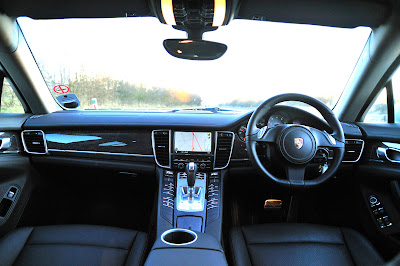
Tuesday, January 19, 2010
How would you like your Phantom, Sir?

“It can’t be done” is a phrase that’s never used at the Rolls-Royce Motor Car plant in Goodwood. Here, in West Sussex, you’ll find people who are passionate about the motorcar, building them by hand and customizing them to the tastes and specs of their future owners.
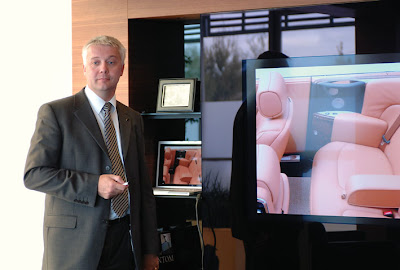
“We used it to measure an inside leg” said Clive Woolmer, head of Rolls-Royce’s Bespoke Business.
When I was in England last, I drove down to Goodwood to visit the RRMC plant and to find out more about their Bespoke programme and spend some time with a Rolls-Royce Phantom. I was as excited as a little boy out on a picnic because not only was I going to see these fine cars being built and meet the people whobuild them, but I was also going to take one out for a drive.
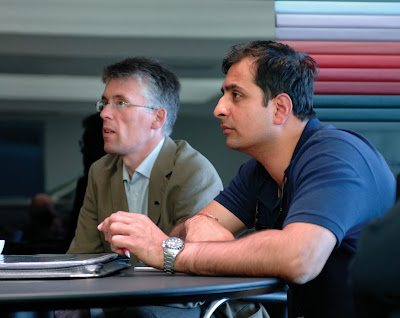 Gavin Hartley, manager Bespoke interior design, explained that the tape measure was used when a customer requested foot rests in his Rolls-Royce Phantom. “Just clapping on standard footrests is never an option.” Mr Hartley emphasized. “The customer’s inside leg was measured and shoe size noted so that special foot rests could be fabricated and perfectly positioned”.
Gavin Hartley, manager Bespoke interior design, explained that the tape measure was used when a customer requested foot rests in his Rolls-Royce Phantom. “Just clapping on standard footrests is never an option.” Mr Hartley emphasized. “The customer’s inside leg was measured and shoe size noted so that special foot rests could be fabricated and perfectly positioned”.


Mr Woolmer explained to me that customers very often visit the factory and have a chat with Gavin Hartley about what they want in their car. Mr Hartley invites them to relax in the plush Bespoke lounge. There, through photographs of previous cars, stunning visual displays and sometimes with the help of quick sketches, he makes suggestions and explains to them how their ideas for accessories or unique design elements can be implemented. A Phantom is also parked in the lounge so that the customers can indicate what they want where, on the car itself.


Much like the torque I realized when I was driving the car - it seemed endless. I just tapped the accelerator and there was enough power to warrant just a gentle caress of the pedal.

 The Phantom features the very best in audiovisual technology. The Lexicon sound system employs 15 speakers and a nine-channel amplifier to deliver 420 watts of sound. Two subwoofers are housed within 16-litre resonance chambers in the space created by the Phantom’s double floor, while a combination of 100 mm mid-range and 25 mm tweeter arrays located all around the car result in an acoustic ‘sweet spot’ that encompasses the whole interior. It felt like being in the West Sussex multiplex. The movies Moscow car chase seemed to be happening inside the car.
The Phantom features the very best in audiovisual technology. The Lexicon sound system employs 15 speakers and a nine-channel amplifier to deliver 420 watts of sound. Two subwoofers are housed within 16-litre resonance chambers in the space created by the Phantom’s double floor, while a combination of 100 mm mid-range and 25 mm tweeter arrays located all around the car result in an acoustic ‘sweet spot’ that encompasses the whole interior. It felt like being in the West Sussex multiplex. The movies Moscow car chase seemed to be happening inside the car.Thursday, October 22, 2009
Thursday, August 20, 2009
Fun in Finland - 6 Degrees Below

Think Finland and what you associate it with depends on the time of day. During office hours, your mind could throw up Nokia, which is one of Finland’s best known products. Whereas if you’re hanging and mellow after hours then maybe a wistful smile will spread on your face as you associate the country with its other best known - and dare I say better loved – product that is Finlandia Vodka.
Whatever you associate to this Scandinavian country sandwiched between Sweden and Russia and flanked by the Baltics, its capital Helsinki will welcome you with opulent grandeur.

Fine restaurants, boutique hotels and some of the best night life in Scandinavia make this city pulse with energy and emanate with a lively vibe. But the city also keeps in touch with its past that is why tram lines are crisscrossed with the coolest European cars and old world cobbled streets are tread on with designer shoes.
Senate Square is the epicentre of Helsinki’s tourist trail. Packed with buskers and food stalls during summer and overlooked by the Tuomiokirkko Lutheran Cathedral and the articulately sculpted statue of Tsar Alexander II of Russia.
Alexander II took steps to increase Finland’s autonomy from Russia and was honoured by this statue in 1894. His grandson Tsar Nicholas II once again ‘Russified’ Finland and the people of Helsinki used to leave flowers at the base of this statue of ‘the good Tsar’ in a sort of quiet protest to the decrees of his grandson. Even today once in a while the stray bouquet turns up.
Besides that there are sights like the Temppeliaukio Church which is cut into granite rock and topped with a skylight roof and the Uspenski Cathedral.
But Finland doesn’t begin and end with Helsinki. In the north of the country is Rovaniemi which is a playground for those who seek adventure and want to have a tete a tete with Santa Claus.

That is right. Santa is here, right here in the heart of Rovaniemi.
Rovaniemi is an hour’s flight north from Helsinki and is the administrative capital of Finland’s Lapland province. Since the Arctic circle line passes through the town you can imagine that winters can go down to -40 degrees C.
While I was in Rovaniemi there yet was snow on the ground and ice on the rivers and lakes, but the locals had a bounce in their step. The sun had popped over the horizon after months of darkness and birds were already singing. Soon spring would give way to summer, the snow would melt, flowers would bloom and the temperature would rise.
But right now we could use the frozen river as a highway.
The next morning it was a beautiful day with the sun shining in a deep blue sky with a few scattered clouds. The Kemijoki River was frozen solid and the landscape was still mostly white. Our guide led us towards our transportation which consisted of spanking new snowmobiles ideal for travelling over snow laden paths and frozen waterways.
Today we were heading towards Santa’s Village to meet jolly old Father Christmas.
Santa’s office is a merry place with kids running around happy after having sat on Santa’s knee. Giant jolly snowmen flanked the entrance of his main office. Next door at Santa’s main post office Santa’s elves were busy at work diligently replying to every letter that Santa received.
And these are a lot because Santa is so popular. And his popularity shows because there are always tourists (mainly children) waiting to meet him. Santa’s inner study is a warm haven with an antique phone, bookshelves with leather bound books and is warm as toast. And of course there is Santa Claus who looks every bit the part.
Children (and even adults) can have their pictures taken with Santa and then buy prints of the same (at a high price of course). You can also have an entire DVD with live footage of your interaction with Father Christmas.
That was all very good, but what set my pulse racing were the snowmobile safaris.
Skidoos, as snowmobiles are affectionately called, are like riding a motorcycle but without having to balance. They are driven from behind and the skis ahead can be steered using the handlebars.
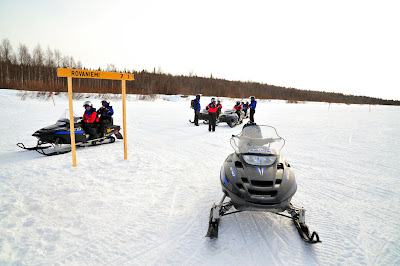
The highlight of my visit to the Arctic Circle were these exploratory rides through the snowed out countryside and over frozen waterways.
On twilight rides bonfires were lit and hot berry juice was drunk during a break and sometimes an Arctic Fox was spotted.
Agreed that the temperature was perpetually hovering near the -10 degree mark and sometimes was even -2- degrees, but it was like a winter wonderland and I was revelling in it.

Monday, March 19, 2007
Destoying Diets - Tucking in Tasmania
 When I was checking in at Brisbane airport for my Qantas flight back home to Bombay. I apologetically told the chubby lady at the counter that I was overweight.
When I was checking in at Brisbane airport for my Qantas flight back home to Bombay. I apologetically told the chubby lady at the counter that I was overweight.“So am I, sweetie. And I blame all our tasty food. You go ahead and have a nice flight!”
I’d of course been talking about my luggage, which she’d smoothly turned into a joke and graciously forgiven me for my 15kg excess.
But she wasn’t wrong about me being overweight. My ten days in Tassie were like one continuous food fest, a gourmet journey aimed at sampling all the islands gastronomical delights.
 Breakfast would tend towards bacon, eggs, sausages and waffles washed down with café latte topped with whipped cream. Lunch was invariably a wholesome meal in a country pub and that was served overflowing from the plate - mostly sausages and bacon mash, fish of the day or a pepper steak with chips and salad. In between breakfast and lunch we invariably stopped for brunch at some quaint village with a café famous for its hot buttered scones served with loads of fresh homemade jam or triple decked stuffed pancakes smothered with hot chocolate sauce and loaded with two scoops of ice cream and fresh cream. We’d prefer a fine dining restaurant for
Breakfast would tend towards bacon, eggs, sausages and waffles washed down with café latte topped with whipped cream. Lunch was invariably a wholesome meal in a country pub and that was served overflowing from the plate - mostly sausages and bacon mash, fish of the day or a pepper steak with chips and salad. In between breakfast and lunch we invariably stopped for brunch at some quaint village with a café famous for its hot buttered scones served with loads of fresh homemade jam or triple decked stuffed pancakes smothered with hot chocolate sauce and loaded with two scoops of ice cream and fresh cream. We’d prefer a fine dining restaurant for  dinner for the
dinner for the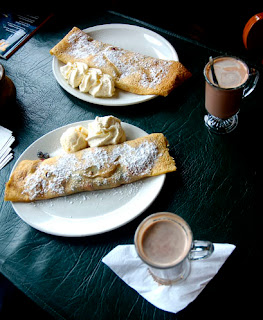 ir quiet ambience ideal for relaxing over a meal at the end of a hectic day. Here there was as much emphasis on the visual appeal of the serving as on its taste, quantity was somewhat sidelined. And in between these four meals we’d snack a little here and there on
ir quiet ambience ideal for relaxing over a meal at the end of a hectic day. Here there was as much emphasis on the visual appeal of the serving as on its taste, quantity was somewhat sidelined. And in between these four meals we’d snack a little here and there on 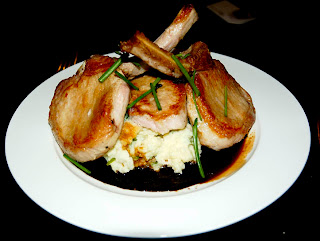 Tasmanian pies, sausage and mustard rolls, pastries and ice creams and taste various cheese, chocolates and salmon at dairies, factories and farms. Added to that was our liquid diet of flavoured milk, fine wines and full bodied beers. So yes, by the time I was ready to return it was becoming quite a fight to button up my jeans.
Tasmanian pies, sausage and mustard rolls, pastries and ice creams and taste various cheese, chocolates and salmon at dairies, factories and farms. Added to that was our liquid diet of flavoured milk, fine wines and full bodied beers. So yes, by the time I was ready to return it was becoming quite a fight to button up my jeans. 
























